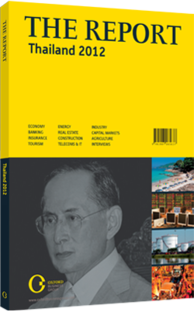OBG talks to Prasarn Trairatvorakul, Governor, Bank of Thailand

Interview: Prasarn Trairatvorakul
What do you see as the appropriate balance to strike between controlling inflationary pressure and supporting economic growth?
PRASARN TRAIRATVORAKUL: Our strategy aims to preserve such a balance in a healthy manner. The Thai economy recovered well from the 2008 crisis, particularly after 2009, indicating its resilience. Since then, we have seen upward pressure on prices from the domestic economy, both on the supply side and in inflation expectations from businesses and consumers. The balance tilted towards controlling inflation and we started to normalise the policy interest rate. We raised the policy rate from 1.25% to 3.5%, closing the gap with the central bank rates of our peers. Then came the last quarter of 2011, when developments in the eurozone and the US brought a sharp global slowdown. Coupled with the worst floods in 70 years, this hit the Thai economy very hard. So the Monetary Policy Committee eased the normalisation process and decided to cut the policy rate by a total of 50 basis points to shore up domestic demand and confidence, in line with our fiscal policy, which provided the needed stimulus. Thanks to this policy coordination and the fundamental strength of the economy, a swift recovery occurred. Now that the situation has improved, we need to consider when to return to the policy rate normalisation path, which will depend on both growth and the outlook regarding inflation.
Which policy instruments are the most suitable for emerging market central banks to manage the large-scale capital flows we saw in 2011?
PRASARN: The best approach is a mix of policy instruments to promote economic growth while preserving stability. Capital inflow is beneficial, but it comes with costs, especially when it is excessive, as it was in 2010. Tools such as a flexible exchange regime give us room to manoeuvre, as we do not have to defend one particular exchange rate level. We also have ample official reserves we can use to intervene in the market if required. Macro-prudential measures can be employed to deal with financial imbalances in specific parts of the economy, such as the financial or real estate sectors. Another option to deal with volatile exchange rates and capital flows is to allow residents to invest abroad. We have continually relaxed exchange control regulations for direct investments, portfolio investments and lending abroad since 2007. Bank of Thailand is in the process of drafting the Capital Account Liberalisation Master Plan that will continue to liberalise outbound investment, and in 2011 we began to see an upward trend. The net outflow seen in 2011 was largely due to Thai direct investment abroad, while nonresident flows saw net inflow against a backdrop of global uncertainty. We expect to see net non-resident inflows again in 2012, which would reflect our promising economic prospects. Even if the global situation turns out worse than expected and drives capital outflows, we believe that our reserve holdings will allow us to cope, and avoid any extreme currency volatility.
What is the appropriate role of foreign banks in the Thai market? What changes has liberalisation brought about in the banking sector?
PRASARN: As recognised in our second Financial Sector Master Plan (FSMP), foreign banks can contribute to the efficiency and competitiveness of our financial sector. Since 1997 we have opened up, allowed several foreign banks to come in and take over local banks. Standard Chartered, CIMB, UOB, Bank of Nova Scotia, ING and others now operate here and there are many foreign bank branches, including Citibank, Deutsche Bank, BNP Paribas and HSBC. Foreign banks are already allowed to operate two branches, and Thailand-incorporated subsidiaries can open an additional 20 branches and 20 more ATMs. The second FSMP will run to 2014 and then we will evaluate the next steps regarding opening up. After 2014 we will likely see the designation of qualified ASEAN banks, which will be allowed to operate in every jurisdiction in the ASEAN region. We are aiming to reach full liberalisation in ASEAN by 2020.
You have reached the limit of premium articles you can view for free.
Choose from the options below to purchase print or digital editions of our Reports. You can also purchase a website subscription giving you unlimited access to all of our Reports online for 12 months.
If you have already purchased this Report or have a website subscription, please login to continue.

